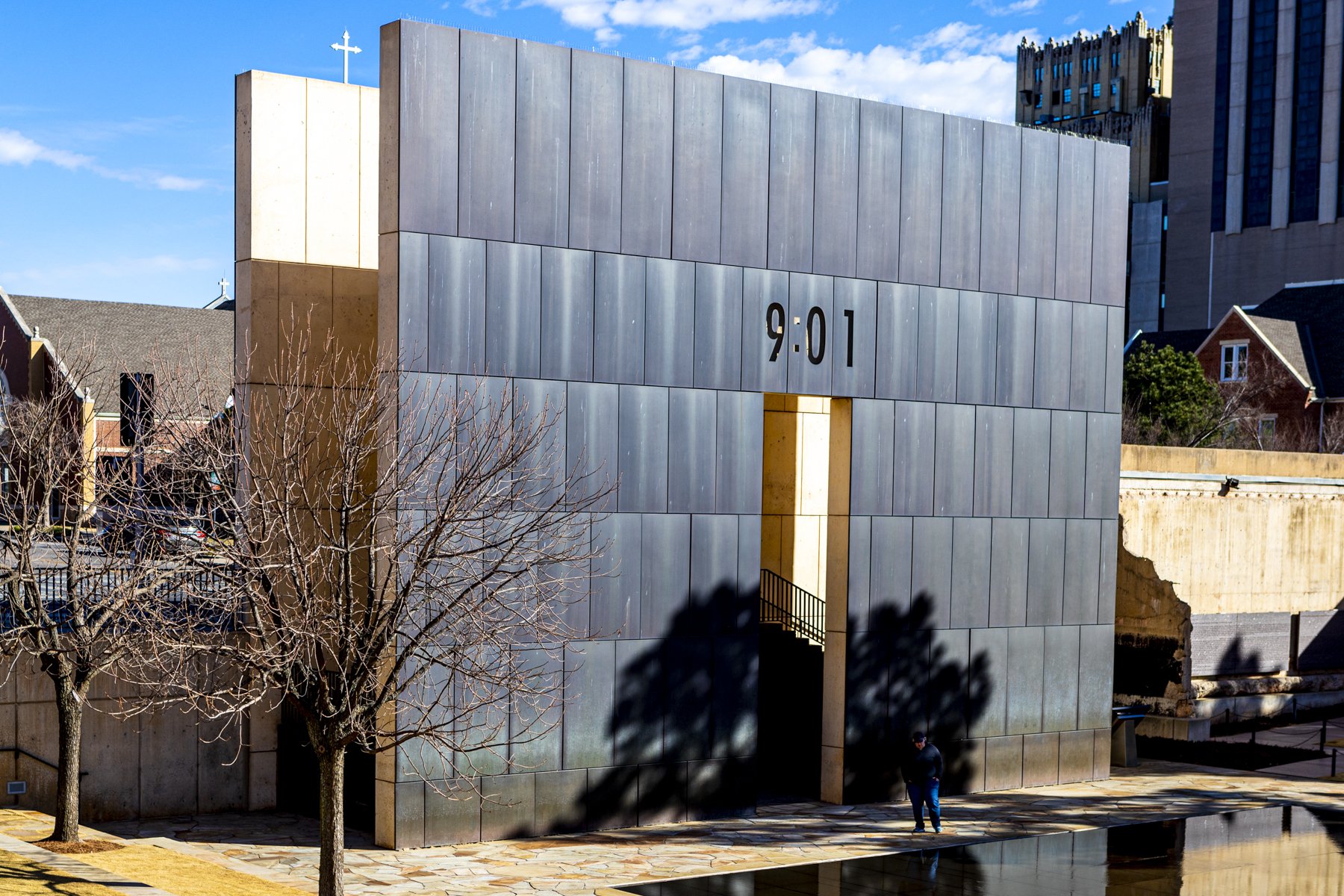
February 11, 2022
OKLAHOMA CITY NATIONAL MEMORIAL MUSEUM
620 N Harvey Ave, Oklahoma City, OK 73102
“The Oklahoma City National Memorial is a memorial in the United States that honors the victims, survivors, rescuers, and all who were affected by the Oklahoma City bombing on April 19, 1995.” - Wikipedia
It isn’t often one finds a museum dedicated to a tragic event that happened in your lifetime. Of course, I remember the Oklahoma City bombing, and knew the principal players, but this museum not only refreshed my memory, but gave me new information and perspective about the horrendous act. The museum has pulled together a lot of videos and use them to tell the story of the people before, during, and after the bombing. I was also struck by all of the actual artifacts the museum has on display, from items recovered from the building after the bombing, to the Glock, knife, and t-shirt Timothy McVeigh possessed when arrested. I thought the museum did an excellent job of taking one through the events of April 19, 1995, and the weeks that followed. The museum’s cell phone app with augmented reality enhanced my trip through the museum.
The Outdoor Symbolic Memorial, next to the museum, stands on the grounds where the events of April 19, 1995, unfolded. Symbolic elements include:
- Field of Empty Chairs – Located where the Murrah Federal Building once stood, the chairs are arranged in nine rows that reflect the floor where those who were killed were working or visiting. Each of the 168 chairs is etched with the name of a person killed. The 19 smaller chairs represent the children. The chairs light up as beacons of hope at night.
- The Gates of Time – These twin gates frame the moment of destruction at 9:02 a.m. The 9:01 East Gate represents the innocence before the attack. The 9:03 West Gate marks the moment when healing began.
- Reflecting Pool – On the ground that was once Fifth Street lies calm reflecting waters that inspire visitors to gaze deep inside and see the face of someone changed forever.
- The Survivor Tree – Encircled by the Promontory Wall with a message of resolve, this near-century-old American Elm stands at the highest point of the Memorial as a symbol of strength and resilience.
- Survivor Wall – More than 600 names of those who survived the blast are etched upon the Murrah Federal Building’s only remaining walls.
(These descriptions came from the Memorial Brochure.)
Start of the self-guided tour of the museum. These are photographs of the 168 men, women, and children that lost their lives in the Oklahoma City Bombing.
Relics recovered after the blast. Note the time on the clock stopped at the time of the blast.
A 300 pound seal that was damaged in the blast.
A display showing the amount of media coverage.
The t-shirt Timothy McVeigh was wearing when arrested. Also other memorabilia from the day.
A statue depicting the Pulitzer Prize winning photograph.
Some objects left at the fence that surrounded the building after the blast.
The car McVeigh used to leave the scene. He was stopped about an hour outside of Oklahoma City because he didn't have a license plate.
The gun and knife McVeigh had on his body when he was arrested.
Television cameras were not allowed inside the courtroom, so newspapers played a big role in informing the public about the trials.
A display of what an area of the office building would have looked like after the blast.
The remarks of Terry Nichols' judge after he was spared the death penalty for his involvement in the bombing.
The Chair Memorial
The 9:01 East Gate
The 9:03 West Gate as seen from the 9:01 Gate.
The Survivors' Wall. This is the only remaining part of the Murrah Federal Building still standing.
The 9:03 West Gate
The 9:03 West Gate from outside the Memorial.
A part of the fence has become a permanent part of the Memorial.
Some items left on the fence.
The Survivor's Tree.

































